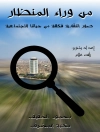R. H.’s ‘The Royal Pastime of Cock-fighting’ delves into the historical and cultural significance of this controversial sport, which has captivated audiences from antiquity to modernity. Employing a rich, descriptive literary style, R. H. blends vivid imagery with meticulous detail, providing an extensive account of the rituals, techniques, and socio-political implications surrounding cock-fighting. Set against the backdrop of its popularity among the aristocracy, the work critically examines the ethical considerations and the evolving perceptions of the sport within shifting societal norms, making it not just a narrative but a reflective exploration of human-animal relationships. R. H. stands as a figure entwined with both the sporting world and philosophical discourse, a background likely instrumental in crafting this text. Little is known about the author, sparking intrigue about their motivations and knowledge base, which hints at a deeper commentary on leisure activities and their ramifications in a historically stratified society. Possessing a keen understanding of both the beauty and brutality inherent in competition, R. H. intricately weaves personal insights with broader themes of power and tradition. For those intrigued by the complexities of culture and sport, ‘The Royal Pastime of Cock-fighting’ is an essential read. This book will not only pique the interest of historians and animal rights advocates alike but also engage anyone eager to explore the interplay between leisure, ethics, and societal values throughout history.
Sobre el autor
The author identified as R. H. emerges from historical anonymity primarily through his work ‘The Royal Pastime of Cock-fighting.’ Unfortunately, there are scant details available regarding his personal life, historical context or any comprehensive body of work. Hence, it remains challenging to piece together a scholarly and detailed biography. R. H.’s contribution to literature, notably in the aforementioned book, reflects an interest in what was, during certain historical periods, a popular and socially significant pastime. This sport, which has since fallen out of favor due to changing social attitudes and animal welfare laws, was once a significant aspect of European, especially British, social life and culture. The book by R. H., possibly first published in the late 17th or early 18th century, provides insight into the rules, breeding, care and cultural impact of cock-fighting, which at the time could have been indicative of a keen observer or participant in the sport. The detailed nature of the treatise suggests that R. H. held a passion for the subject, and it has historical value for researchers examining the period’s sports and pastimes. Given the scant information on R. H.’s background and the literary style which does not extensively feature in broader literature, the scholarly community must often content itself with analysis of his known work, without the enriching context of an authorial biography.












